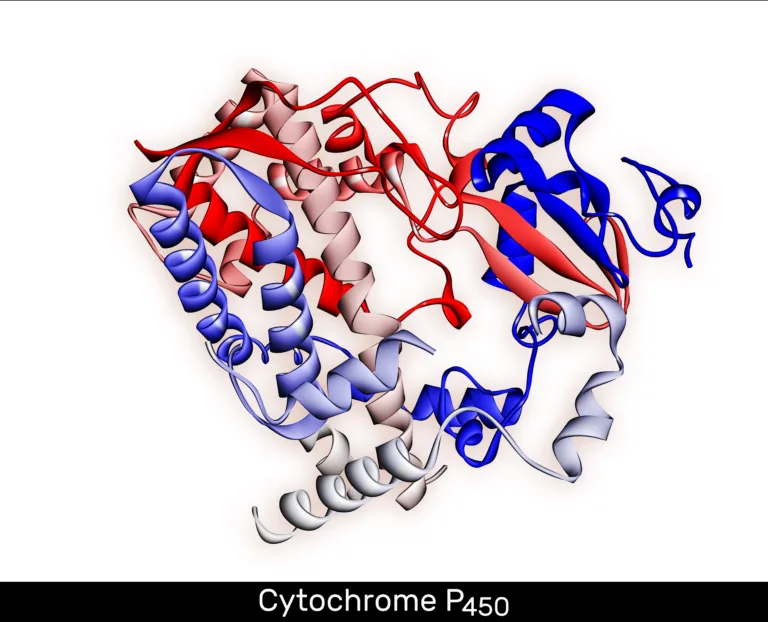As healthcare systems in the United States continue to grapple with rising costs and variable patient outcomes, a promising solution has emerged in the form of pharmacogenomics (PGx) testing.
This innovative approach to precision medicine enables healthcare providers to tailor medication therapy to individual patients based on their unique genetic profiles, potentially reducing adverse drug events and improving medication efficacy. Let’s talk about Pharmacogenomics ROI.

The question remains whether the benefits of PGx testing can translate into a tangible return on investment for healthcare systems. By examining the clinical benefits, financial implications, and real-world case studies, this article aims to provide a comprehensive framework for healthcare administrators to evaluate and implement PGx initiatives effectively.
The Evolution of Pharmacogenomics in Healthcare
The integration of pharmacogenomics (PGx) into healthcare systems has marked a significant shift towards personalized medicine. Pharmacogenomics, the study of how genes affect the response to drugs, has evolved substantially from its research roots to clinical implementation.
From Research to Clinical Implementation
The journey of PGx from research to clinical practice has been facilitated by large-scale studies, such as the Electronic Medical Records and Genomics Network (eMERGE-PGx) study, which have advanced the understanding of genetic variations and their impact on drug responses. Although the number of such studies has increased, there remains a need to understand the risks and benefits associated with returning PGx results to study participants. The implementation of PGx testing in clinical settings has shown promise in tailoring medication to individual genetic profiles, thereby improving patient outcomes.
Current Adoption Rates in US Healthcare Systems
Adoption rates of PGx testing vary across different healthcare settings in the US. Large academic medical centers have been at the forefront, with approximately 70% having implemented some form of PGx testing program. In contrast, community hospitals lag behind, with only about 20-30% having established PGx programs, often limited to specific areas like oncology or cardiology. Regional health systems are increasingly adopting PGx testing as part of population health initiatives. The adoption of PGx is driven by institutional champions and is influenced by factors such as reimbursement policies and the ability to capture clinical benefits and cost savings.
The COVID-19 pandemic has accelerated the adoption of PGx in some healthcare settings by highlighting the importance of precision medicine. As evidence of the clinical utility and cost-effectiveness of PGx accumulates, it is expected that more healthcare systems will integrate PGx testing into their clinical practice, enhancing patient care through data-driven decision-making.
Understanding Pharmacogenomics ROI Fundamentals
To make informed decisions about pharmacogenomics (PGx) implementation, healthcare administrators must understand the fundamentals of ROI analysis. This involves evaluating various financial indicators and metrics that can help assess the value of PGx testing within a healthcare system.
Defining Value Metrics in Pharmacogenomics
Value metrics in pharmacogenomics are crucial for assessing the effectiveness and financial viability of PGx testing programs. These metrics include initial capital expenditures, operational expenses, revenue implications, and cost avoidance. Initial investments cover testing equipment, laboratory certification, IT infrastructure, and staff training. Ongoing expenses include testing costs, IT maintenance, quality assurance, and continuing education for clinicians.
- Initial capital expenditure requirements include testing equipment and laboratory certification.
- Operational expenses encompass ongoing testing costs and IT system maintenance.
- Revenue implications may include new billing opportunities and enhanced reimbursement rates.
Key Financial Indicators for Healthcare Administrators
Healthcare administrators require specific financial indicators to evaluate the business case for PGx implementation and monitor program performance. Key indicators include return on investment (ROI) timelines, break-even analysis, sensitivity analyses, and benchmarking against similar healthcare systems.
By examining these financial indicators, administrators can gain a comprehensive understanding of the PGx program’s financial performance and make informed decisions about its future.
The Clinical Impact of Pharmacogenomic Testing
By analyzing genetic profiles, PGx testing offers valuable insights into optimizing medication therapy. The results of pharmacogenomic testing provide crucial information on drug selection, appropriate dosing, maximization of efficacy, and minimization of adverse effects.
Reduction in Adverse Drug Events
One of the significant benefits of PGx testing is the reduction in adverse drug events. By understanding a patient’s genetic predisposition to certain drug reactions, healthcare providers can make informed decisions about medication selection and dosing. Studies have shown that PGx-guided treatment can significantly reduce the incidence of adverse drug reactions, thereby improving patient safety.
For instance, in the field of psychiatry, PGx testing has been shown to reduce the risk of adverse reactions to psychiatric medications. This not only enhances patient safety but also improves the overall quality of care.
| Area of Medicine | Benefit of PGx Testing | Outcome |
|---|---|---|
| Psychiatry | Reduced risk of adverse reactions | Improved patient safety |
| Cardiovascular Medicine | Optimized warfarin dosing | Reduced risk of complications |
| Cancer Treatment | Better response rates to chemotherapy | More effective treatment regimens |
Improvement in Medication Efficacy
Beyond reducing adverse events, PGx testing significantly improves medication efficacy by enabling more precise drug selection and dosing based on individual genetic profiles. Studies have demonstrated that patients receiving PGx-guided treatment achieve better outcomes across various medical specialties.
For example, in cardiovascular medicine, PGx testing for warfarin dosing has been shown to reduce the time to stable therapeutic range by 27-43%, improving anticoagulation management and reducing complication risks. Similarly, cancer patients receiving PGx-guided chemotherapy experience better response rates and fewer dose-limiting toxicities, allowing for more effective treatment regimens.
The cumulative effect of improved medication efficacy includes better disease management, fewer complications, and reduced overall healthcare utilization for chronic conditions. By tailoring treatment to the individual’s genetic profile, healthcare providers can enhance the therapeutic benefits of medications while minimizing their risks.
Cost-Benefit Analysis of PGx Implementation
The integration of PGx testing into clinical practice involves significant upfront costs, necessitating a detailed examination of both initial expenditures and potential long-term savings. A comprehensive cost-benefit analysis is essential to understand the financial implications of adopting PGx testing in healthcare systems.
Initial Investment Requirements
The initial investment for implementing PGx testing includes several key components. These comprise the costs associated with genetic testing itself, infrastructure development for data management and clinical decision support systems (CDSS), and education for healthcare providers.
A study on the implementation of PGx-CDS alerts predicted that over 20 years, 3,169 alerts would be triggered, including 1,721 for clopidogrel in patients with acute coronary syndrome (ACS) and 1,448 for warfarin in patients with atrial fibrillation (AF). The average total cost per alert was $420, broken down into $395 for medical costs and $24 for informatics, with the overall program costing just under $3 per person over 20 years.
| Cost Component | Cost per Alert | Total Cost Over 20 Years |
|---|---|---|
| Medical Cost | $395 | $1,251,655 |
| Informatics Cost | $24 | $76,056 |
| Total Cost | $420 | $1,327,711 |
Long-term Cost Savings Projections
Long-term cost savings from PGx implementation accrue through multiple mechanisms, including avoided adverse drug events, reduced hospitalizations, and improved medication adherence. Each prevented serious adverse event can save between $3,000 to $10,000 in direct healthcare costs.
- Avoided adverse drug events represent a primary source of cost savings.
- Reduced hospitalizations due to improved medication management translate to significant cost savings.
- Optimized medication selection reduces “medication churn,” leading to better disease control and fewer complications.
Models suggest that well-implemented PGx programs can achieve a positive ROI within 1-3 years, with cumulative savings continuing to grow as the tested patient population increases.
Building a Comprehensive PGx Business Case
To successfully implement PGx, healthcare systems must construct a compelling business case that addresses the multifaceted aspects of this innovative approach. A well-crafted business case is essential for securing stakeholder buy-in and allocating necessary resources.
Essential Components of a Successful Proposal
A successful PGx business case should include several key elements. Effective stakeholder engagement is critical, requiring tailored approaches for different groups within the healthcare system. This includes executive leadership, physicians, pharmacists, laboratory leadership, and information technology stakeholders. Each group has unique needs and concerns that must be addressed to ensure successful PGx implementation.
- Executive leadership engagement should focus on strategic alignment, financial implications, and competitive positioning.
- Physician engagement strategies must address clinical utility, workflow integration, and educational needs.
- Pharmacist involvement is essential, as they often serve as clinical champions.
Stakeholder Engagement Strategies
Stakeholder engagement is a crucial aspect of PGx adoption. Different stakeholders require different engagement strategies. For instance, clinicians and physicians need to be convinced of the clinical utility of PGx testing, while laboratory leadership must be engaged regarding testing methodology and quality control. Information technology stakeholders need clear specifications for system integration and data management requirements.
- Patient engagement strategies should include education about the benefits of PGx testing and consent processes.
- Payer relations may be necessary to negotiate coverage policies and reimbursement rates.
- Creating a formal governance structure facilitates ongoing communication and problem-solving.
Case Study: Targeted PGx Testing Approach
By focusing on high-risk patients, a targeted PGx testing approach has demonstrated substantial clinical and financial benefits in a recent case study. This approach involves identifying patients who are most likely to benefit from pharmacogenomic testing, thereby optimizing resource allocation and maximizing return on investment.

Risk Stratification Methodology
The risk stratification methodology employed in this case study involved analyzing patient data to identify individuals at high risk of adverse drug events. By leveraging advanced analytics and machine learning algorithms, the healthcare organization was able to pinpoint patients who would most likely benefit from PGx testing. This targeted approach enabled the organization to allocate testing resources more efficiently, ensuring that the program was both cost-effective and clinically relevant.
The methodology also included assessing patients’ medical histories, current medications, and genetic profiles to determine their risk stratification. This comprehensive assessment allowed healthcare providers to make informed decisions about which patients to test and how to tailor their treatment plans accordingly.
Achieved 3:1 ROI Within Six Months
The case study organization achieved an impressive 3:1 return on investment within six months of implementing their targeted PGx testing program. This significant ROI was primarily due to the cost savings realized from avoiding adverse drug events. By identifying and mitigating potential medication-related problems, the organization was able to reduce healthcare utilization and associated costs. The program identified an average of four potential adverse drug events per patient tested, with medication changes implemented to prevent these events from occurring.
The financial analysis included both direct testing costs and program implementation expenses, providing a comprehensive assessment of the total investment. The results demonstrated that the cost savings from avoided adverse drug events far outweighed the costs of the testing program, yielding a substantial return on investment. As the program continued, the ROI improved, reaching 5:1 by the end of the first year.
Integrating PGx with Electronic Health Records
The integration of Pharmacogenomics (PGx) with Electronic Health Records (EHRs) represents a significant advancement in personalized medicine. By embedding genetic information directly into clinical workflows, healthcare providers can make more informed decisions about patient care.
Clinical Decision Support Alert Systems
Clinical Decision Support (CDS) systems integrated with PGx data can significantly enhance the utility of EHRs. CDS alerts can notify clinicians about potential gene-drug interactions, ensuring that medication prescriptions are tailored to the individual’s genetic profile. For instance, a study predicted that over 20 years, 3,169 PGx-CDS alerts would be triggered, including alerts for clopidogrel and warfarin, critical medications where genetic information can significantly impact efficacy and safety.
Cost-Effectiveness of EHR Integration
The cost-effectiveness of integrating PGx with EHRs is a crucial consideration. Initial development costs include building interfaces and creating clinical decision support rules. Ongoing expenses cover system updates and knowledge base maintenance. However, studies indicate that the informatics cost per PGx alert fired is relatively low, ranging from $20-$50. The return on investment comes from improved utilization of genetic information, with clinicians being 5-7 times more likely to consider genetic data when presented through automated alerts.
As healthcare systems continue to adopt PGx testing and EHR integration, the cost-effectiveness improves over time. By leveraging existing clinical decision support frameworks and implementing phased approaches, healthcare organizations can distribute costs while demonstrating value to stakeholders. The most effective strategies focus on high-impact medications before expanding to broader applications.
Measuring Pharmacogenomics ROI in Real-World Settings
To justify the implementation of pharmacogenomics, healthcare systems must quantify its ROI in real-world settings. This involves establishing robust frameworks for data collection and analysis to accurately measure the impact of PGx programs.
Quantifiable Metrics for Success
To evaluate the success of pharmacogenomics programs, healthcare organizations need to track quantifiable metrics. These include genetic test results, medication prescribing patterns, clinical outcomes, healthcare utilization, and financial information. By monitoring these metrics, organizations can assess the effectiveness of their PGx initiatives and identify areas for improvement.
- Genetic test results and their impact on treatment decisions
- Changes in medication prescribing patterns following PGx testing
- Clinical outcomes, such as reduction in adverse drug events
- Healthcare utilization rates, including hospitalizations and emergency department visits
- Financial metrics, including cost savings and ROI
Data Collection and Analysis Frameworks
Effective data collection and analysis frameworks are crucial for measuring PGx ROI. This involves establishing prospective data collection protocols before program implementation and using automated data extraction from electronic health records and financial databases. Advanced statistical analysis approaches, such as matched cohort designs and time series analyses, help isolate the impact of PGx testing on outcomes.
By leveraging these frameworks, healthcare organizations can translate clinical outcomes into financial terms using economic modeling techniques, including cost-effectiveness analysis and budget impact models. Regular reporting cycles with standardized dashboards facilitate ongoing program evaluation and timely interventions when metrics suggest opportunities for improvement.
Overcoming Implementation Barriers
Successful implementation of PGx testing necessitates addressing the various barriers that hinder its adoption. One of the primary challenges is the lack of training among clinicians to interpret genomic test results effectively.
Addressing Provider Resistance
Provider resistance is a significant barrier to the adoption of PGx testing. Most clinicians lack the training to readily interpret genomic test results, which can lead to hesitation in adopting this technology. To overcome this, healthcare systems can invest in comprehensive training programs that educate providers on the benefits and interpretation of PGx testing.
- Developing educational programs tailored to clinicians’ needs can enhance their confidence in using PGx testing.
- Providing access to expert consultation can help clinicians make informed decisions regarding PGx testing.
Navigating Reimbursement Challenges
Reimbursement challenges represent another significant barrier to the widespread implementation of PGx testing. The current reimbursement landscape is complex, with variable coverage policies across different payers.
The complexity of reimbursement can be navigated through strategic approaches, including developing payer-specific business cases and leveraging real-world outcomes data to demonstrate the value of PGx testing.
| Reimbursement Strategy | Description | Benefit |
|---|---|---|
| Payer-Specific Business Cases | Developing business cases tailored to individual payers | Enhanced coverage likelihood |
| Real-World Outcomes Data | Utilizing data from pilot implementations | Demonstrated value and ROI |
| Alternative Payment Models | Adopting value-based arrangements or bundled payments | Better alignment of incentives for PGx testing |
Future Directions in Pharmacogenomics Economics
Pharmacogenomics is on the cusp of a significant economic transformation, with new cost models and expanding applications set to redefine precision medicine. As the field advances, it’s crucial to understand the future directions that will shape the economics of PGx.
Emerging Cost Models
The economic viability of PGx is being enhanced through emerging cost models that are more aligned with the value PGx brings to patient care. These include:
- Value-based pricing structures that tie the cost of PGx testing to patient outcomes
- Subscription models for repeated testing and monitoring
- Bundle payments that incorporate PGx testing into overall treatment costs
These models are expected to make PGx more accessible and financially sustainable for healthcare systems.
Expanding Applications Beyond Current Practice
The applications of PGx are expanding beyond current practice areas, creating new opportunities for demonstrating clinical utility and economic value. Some of the key areas include:
- Preventive pharmacogenomics, guiding medication selection before disease onset in high-risk individuals
- Pediatric applications, with early genetic testing to guide medication management throughout childhood and adolescence
- Oncology pharmacogenomics, expanding beyond traditional chemotherapy to targeted therapies and immunotherapies
- Polypharmacy management in complex patients, using genetic information to untangle complicated medication regimens
These expanding applications will require new economic analyses to demonstrate value in diverse clinical contexts and patient populations, potentially strengthening the overall business case for comprehensive PGx programs.
Patient Success Stories: The Human Element of PGx ROI
Patient success stories highlight the tangible benefits of pharmacogenomic testing in clinical practice. By examining real-world cases, we can better understand how PGx testing improves patient outcomes and contributes to the overall return on investment (ROI) for healthcare systems.
Cardiovascular Medication Optimization Case
A significant application of PGx testing is in optimizing cardiovascular medication. For instance, a patient with high blood pressure was struggling to find an effective medication regimen. Pharmacogenomic testing revealed genetic variations affecting the metabolism of certain cardiovascular drugs. Based on these test results, the patient’s treatment plan was adjusted, leading to better blood pressure control and reduced risk of adverse drug events.
| Condition | Pre-PGx Testing Outcome | Post-PGx Testing Outcome |
|---|---|---|
| High Blood Pressure | Ineffective medication regimen, increased risk of ADEs | Improved blood pressure control, reduced ADE risk |
Pain Management and Mental Health Applications
Pain management and mental health represent therapeutic areas where PGx testing has shown significant clinical impact. A 45-year-old patient with chronic neuropathic pain had been cycling through multiple medications with little relief. PGx testing identified him as an ultrarapid metabolizer of CYP2D6 and a poor metabolizer of CYP2C19, explaining the inefficacy and adverse effects of certain pain medications. Adjusting his pain management regimen based on his genetic profile resulted in improved pain control with minimal side effects.
Similarly, in mental health, a 38-year-old patient with treatment-resistant depression benefited from PGx testing. The test identified genetic variations affecting her response to antidepressants, guiding her psychiatrist to prescribe a more effective medication. This led to significant symptom improvement and a return to full functioning.
These cases illustrate the value of PGx testing in complex therapeutic areas like pain management and mental health, where trial-and-error prescribing is common and the consequences of suboptimal treatment are significant. By personalizing treatment plans, PGx testing not only improves patient outcomes but also contributes to a more efficient healthcare system by reducing unnecessary healthcare utilization and improving productivity.
Creating a Sustainable Pharmacogenomics Program
Creating a sustainable PGx program requires a multifaceted approach that encompasses financial planning, operational efficiency, and cultural integration within healthcare organizations.
To achievelong-term sustainability, healthcare systems must diversify funding sources, including reimbursement, institutional support, and research grants. Operational efficiency is maintained through standardized workflows, adequate staffing, and ongoing training, ensuring the program’s effectiveness as it scales.
A robustknowledge management systemis essential to keep pace with the rapidly evolving evidence base, ensuring clinical recommendations remain current. Regular audits, outcome monitoring, and continuous improvement cycles maintain program integrity.
Establishing agovernance structurewith key stakeholders provides oversight and strategic direction. Succession planning for key personnel ensures distributed leadership and expertise.
By integrating these elements, a pharmacogenomics program becomes a standard of care, demonstrating true institutional adoption and long-term viability. This comprehensive approach supports continued investment and fosters a culture of sustainability within healthcare systems.
Pharmacogenomics ROI: Building the Business Case for Healthcare Systems incorporates essential elements like maintaining operational efficiency, establishing a robust knowledge management system, and implementing governance structures with key stakeholders. Regular audits, outcome monitoring, and continuous improvement cycles are crucial to maintaining program integrity alongside succession planning for key personnel. Through these integrated efforts, pharmacogenomics programs can achieve institutional adoption, sustained investment, and foster a culture of sustainability within healthcare systems. For more great articles, go here.





